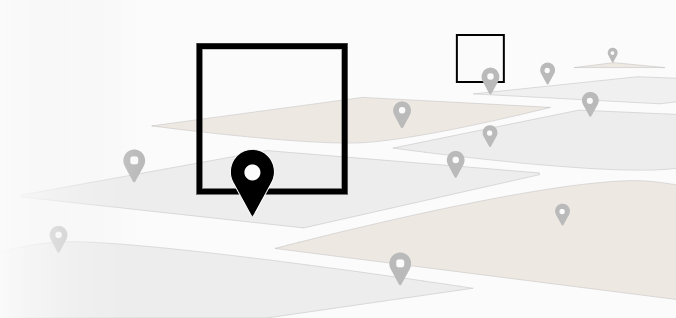Over time, signs of ageing become clearer. Some of these, such as the deepening of expression lines and folds, become more prominent on the face. Below, we’ll tell you what the nasolabial fold is and how to remove it, as it is one of the most common changes that we can find in the lower third of the face.

What is a nasolabial fold?
Although it may seem to occur at a young age, the skin starts to lose its regenerative capacity at around the ages of 25 to 30, and the nasolabial fold is one of the most common sites of skin ageing.
The nasolabial fold, also known as the laugh or smile line, or nasolabial sulcus, is a type of fold which forms at the bottom of the face, around the mouth. It is a fold that goes from the bottom side of the nose to the corner of the mouth, and it should not be confused with the so-called "marionette lines". Unlike the nasolabial fold, these lines begin the corner of the mouth, and go down to the chin. What both these sets of lines have in common is that they play a role in facial expressions such as tiredness or sadness, and this leads many people to want to eliminate them.
Why does the nasolabial fold appear?
Many genetically-determined internal factors are implicated in the creation of this fold; to this we must add oxidative stress, caused by external factors.
Skin maintains its youthful appears due to the action of 3 basic components: elastin, collagen and hyaluronic acid.
The internal factors1 relate to the progressive loss of tone in the muscles that insert into that part of the face, especially the upper lip elevators, as well as due to the thinning out of the skin layers. These factors can also be linked with typical fat loss that occurs with age in the deep medial compartments, as well as with bone resorption, of which we will talk more deeply further on.
However, external factors can also play a key role in the appearance of the nasolabial folds. This is especially true in the following 3 cases:
- Tobacco: smoking reduces collagen and elastin synthesis, affects repair mechanisms and alters tone and luminosity.2
- Sun damage: prolonged exposure to the sun without adequate protection may cause serious levels of skin dehydration, leading to the loss of elasticity and thickening.3
- Weight-changes: rapid weight loss often leads to excess skin, and plays a large role in producing very saggy skin on the face.
Symptoms
As we have been, the appearance of nasolabial folds is closely related to the normal effects of ageing such as sagginess and bone resorption. Even though bones form and regenerate throughout a person's life, at a certain stage, bone destruction outpaces bone creation, and what is known as "bone resorption", or a reduction in bone density, including of the facial bones, starts to take place.
One of the best ways of detecting nasolabial folds is the loss of the zygomatic arch (i.e. the cheekbones become sunken) and the degree of resorption at the so-called "pyriform fossa", which is the point at which the cheek joins the upper jaw bone.
How can you tell that it is beginning to form?
You can do this very simply: smile in front of the mirror, and, when your face is returning to its initial expression, count the number of seconds required for the lines that go from your nose to the corner of your mouth to disappear; if that line is present for more than 3 seconds, it is highly possible that they will appear with time.
They usually appear at around the ages of 40 to 50.4
Treatment for the nasolabial fold
Although several procedures exist for removing the nasolabial fold, such as surgery (face-lift) and radiofrequency treatment, filling treatments have become very popular as they are highly efficient, and less invasive than other methods.
Facial filling materials include substances such as polylactic acid or calcium hydroxyapatite. However, there is no doubt that hyaluronic acid, found in products like mesofiller® and mesohyal™, is one of the most commonly used fillers by mesoestetic®.
mesofiller®: range of dermal fillers with reticulated hyaluronic acid
mesofiller® fillers are a good option, as they contain reticulated hyaluronic acid that helps to correct the nasolabial fold. Its technology is also of the best quality, efficacy, and safety in clinical practice.
Contact a professional to receive treatment.
It is also worth mentioning the mesohyal™ range of products based on non-reticulated hyaluronic acid for improving skin quality and firmness. It comes as a facial and body treatment, and is part of the larger range of hygiene products offered by intradermally administered Class III mesoestetic® products that come with a CE marking, resulting in safe and effective treatments.
Similarly, anti-ageing treatments could be of interest for treating wrinkles and firming up the skin of the face. These include the products from the age element® line, whose epigenetic effectiveness is patented and has been demonstrated.
We hope that we have helped you to understand what the nasolabial fold is; as well as the factors which lead to its appearance, and the effective treatments available should you wish to remove them.
Bibliography
2 https://medicadoo.es/2022/03/28/como-afecta-el-tabaco-a-nuestra-piel/
3 https://medicadoo.es/2019/05/09/danos-causados-por-el-sol-en-nuestra-piel/
4 https://www.miwebdesalud.com/tratamiento-surcos-nasogenianos/#Que_son_los_surcos_nasogenianos













